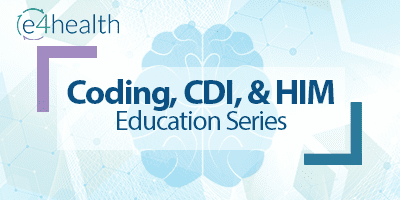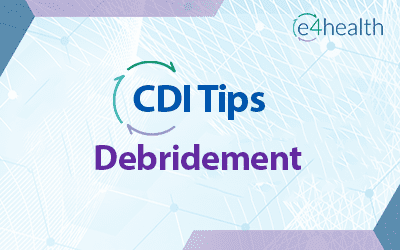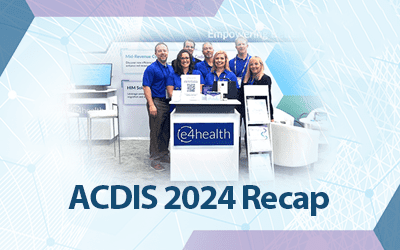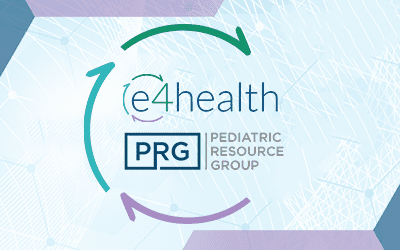News & Blog
Gain industry insights and stay up to date on company updates from e4health
[HIP Week 2024] e4health Team Member Spotlight: Theresa Converse
This HIP Week, we are shining a light on members of the e4health Team who are truly making an impact. Today, we're putting Theresa Converse, e4health Senior Healthcare Consultant, in the Team...
Register for the e4health May CDI Leadership Roundtable
Apr 18, 2024 | CDI, Coding + CDI, Education & Training, News, Webinar
Acquire substantial knowledge on pertinent and current CDI industry subjects. We invite you to be part of our May CDI Leadership Roundtable with other CDI leaders. Taking place on May 8th from noon...
CDI Tips & Friendly Reminders: Debridement
Apr 18, 2024 | CDI, Coding + CDI, Coding Tips, Education & Training, News
Debridement Excisional Debridement Definition: The surgical removal or cutting away of devitalized tissue, necrosis, and slough. Non-Excisional Debridement Definition: The nonoperative...
[HIP Week 2024] e4health Team Member Spotlight: Stefanie Borden
This HIP Week, we are shining a light on members of the e4health Team who are truly making an impact. Today, we're putting Stefanie Borden, e4health Project Manager, in the Team Spotlight!Let's Hear...
[HIP Week 2024] e4health Team Member Spotlight: Andrew Jans
This HIP Week, we are shining a light on members of the e4health Team who are truly making an impact. Today, we're putting Andrew Jans, e4health HIM Analyst, in the Team Spotlight! Let's Hear From...
[HIP Week 2024] e4health Team Member Spotlight: Christina Toledo
This HIP Week, we are shining a light on members of the e4health Team who are truly making an impact. Today, we're putting Christina Toledo, PB Coder, in the Team Spotlight!Let's Hear From...
[HIP Week 2024] e4health Team Member Spotlight: Kyle Drey
This HIP Week, we are shining a light on members of the e4health Team who are truly making an impact. Today, we're putting Kyle Drey, e4health Client Executive, in the Team Spotlight!Let's Hear From...
Advancing CDI: e4health at the 2024 ACDIS Conference
Apr 10, 2024 | Article, Blog, CDI, News
The 2024 ACDIS Conference marked a milestone for clinical documentation improvement (CDI), and e4health was at the forefront, showcasing how we empower healthcare providers to achieve advanced CDI...
e4health Teams Up with Pediatric Resource Group to Enhance Pediatric CDI Programs Nationwide
e4health, the leading mid-revenue cycle solutions provider, has partnered with Pediatric Resource Group (PRG) to support health systems as they develop, expand, and optimize their programs in the...
![[HIP Week 2024] e4health Team Member Spotlight: Theresa Converse](https://www.e4.health/wp-content/uploads/2024/04/theresa-thumbnail.png)


![[HIP Week 2024] e4health Team Member Spotlight: Stefanie Borden](https://www.e4.health/wp-content/uploads/2024/04/stef-borden.png)
![[HIP Week 2024] e4health Team Member Spotlight: Andrew Jans](https://www.e4.health/wp-content/uploads/2024/04/andrew-jans-thumbnail.png)
![[HIP Week 2024] e4health Team Member Spotlight: Christina Toledo](https://www.e4.health/wp-content/uploads/2024/04/christina-thumbnail-2.png)
![[HIP Week 2024] e4health Team Member Spotlight: Kyle Drey](https://www.e4.health/wp-content/uploads/2024/04/kyle-drey-website.png)

